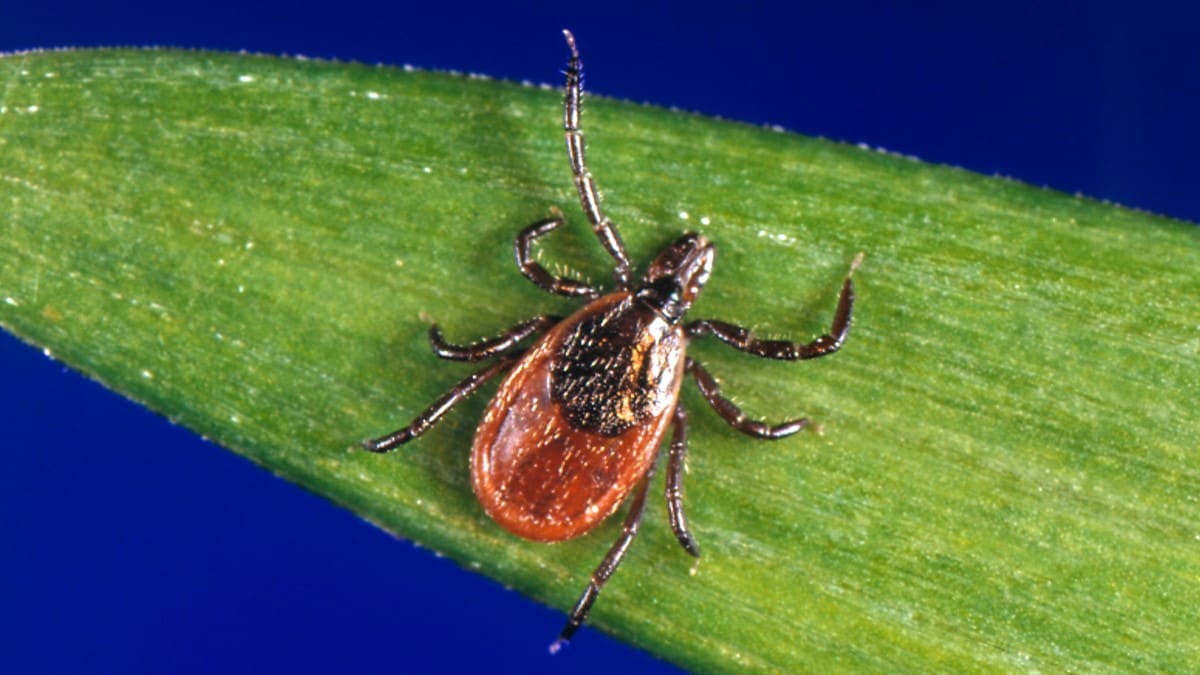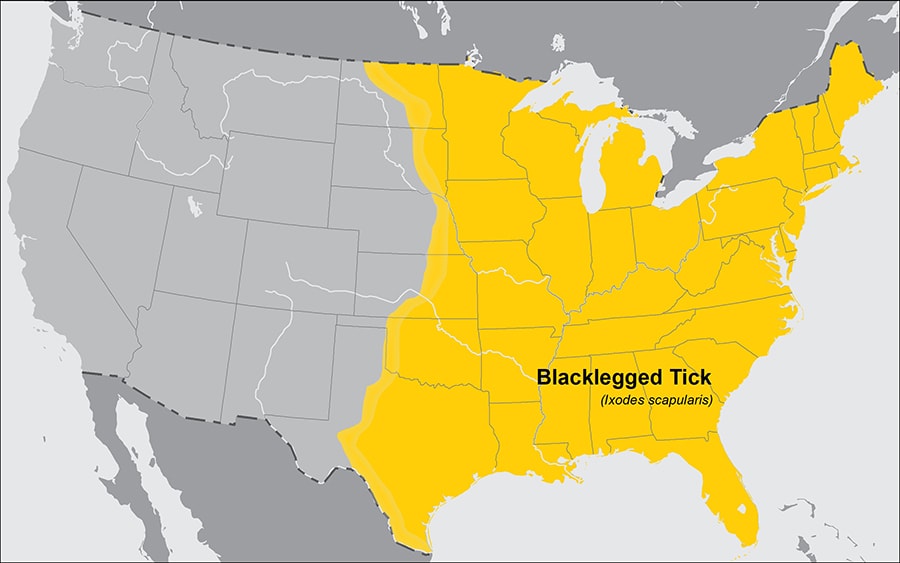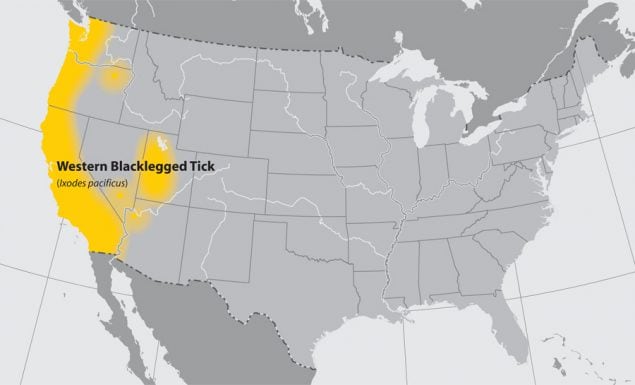Key points
- Anaplasmosis is a disease caused by the bacteria Anaplasma phagocytophilum primarily spread to people by the bite of an infected tick.
- Signs and symptoms of anaplasmosis typically begin within 1–2 weeks after the bite of an infected tick.
- Healthcare providers order certain blood tests to look for evidence of anaplasmosis.

What it is
Anaplasmosis is a disease caused by the bacteria A. phagocytophilum. These bacteria are spread to people by tick bites primarily from:
- The blacklegged tick (Ixodes scapularis)
- The western blacklegged tick (Ixodes pacificus)
People with anaplasmosis will often have fever, headache, chills, and muscle aches. Doxycycline is the drug of choice for adults and children of all ages with anaplasmosis.
Signs and symptoms
Signs and symptoms of anaplasmosis typically begin within 1–2 weeks after the bite of an infected tick, however many people do not remember being bitten.
See your healthcare provider if you become ill after being bitten by a tick or have been in areas where ticks live. Ticks commonly live in the woods or in areas with high brush.
Early illness
Early signs and symptoms (days 1-5) are usually mild or moderate and may include:
- Fever, chills
- Severe headache
- Muscle aches
- Nausea, vomiting, diarrhea, loss of appetite
Late illness
If treatment is delayed or if there are other medical conditions present, anaplasmosis can cause severe illness. Prompt treatment can reduce your risk of developing severe illness.
Signs and symptoms of severe (late stage) illness can include:
- Respiratory failure
- Bleeding problems
- Organ failure
- Death
Risk factors for severe illness:
- Delayed treatment
- 65 years of age or older
- Weakened immune system
People with weakened immune systems are at risk for severe illness. This includes people receiving some cancer treatments, individuals with advanced HIV infection, prior organ transplants, or people taking some medications.
How it spreads
Transmission
Anaplasmosis is a tickborne disease caused by the bacteria A. phagocytophilum.
Tick bites
A. phagocytophilum is primarily spread to people by the bite of an infected tick. In the United States, the bacteria are carried by the:
- Blacklegged tick (Ixodes scapularis) in the eastern United States.

- Western blacklegged tick (Ixodes pacificus) along the West Coast

Blood transfusion
In rare cases, A. phagocytophilum has been spread by blood transfusion.
Anaplasmosis is most commonly reported in the Northeastern and upper Midwestern states.
Prevention
There is no vaccine to prevent anaplasmosis. Prevent illness by preventing tick bites, preventing ticks on your pets, and preventing ticks in your yard.
Testing and diagnosis
Your healthcare provider can order certain blood tests to look for evidence of anaplasmosis or other illnesses that cause similar symptoms.
Test results may take several weeks.
If your healthcare provider thinks you have anaplasmosis, they should prescribe antibiotics while waiting for test results to return.
